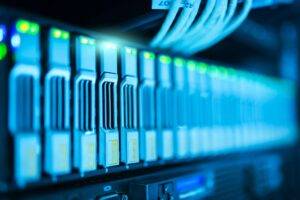Safeguard Your Digital Environment
 In the digital age, the threat of malware is omnipresent, with new strains emerging every day to evade traditional security measures. For businesses, the consequences of a malware infection range from minor disruptions to catastrophic data breaches, which can have dire financial and reputational repercussions.
In the digital age, the threat of malware is omnipresent, with new strains emerging every day to evade traditional security measures. For businesses, the consequences of a malware infection range from minor disruptions to catastrophic data breaches, which can have dire financial and reputational repercussions.
To fortify defenses against these insidious cyber threats, a multi-layered security approach is essential. This post will delve into the critical steps organizations can take to bolster their cybersecurity posture and mitigate the risk of malware.
The Complete Checklist
By taking these proactive measures, organizations can significantly reinforce their cybersecurity defenses. While no system can be made entirely malware-proof, layering these strategies creates a robust framework that reduces risk and prepares organizations to respond effectively to threats.
Employ a NextGen AV Solution
Traditional antivirus programs are no longer sufficient. Next-generation antivirus (NextGen AV) solutions, like WithSecure, use advanced techniques such as machine learning, behavioral detection, and cloud-based analytics to detect and block new and sophisticated threats. By deploying NextGen AV on all endpoints, organizations can protect against malware that conventional AV might miss.
Secure Your Workstations
The entry points for malware are often individual workstations and their users. Take the following measures to train users to use their computer systems with care.
Local Admin/Remote User Cleanup
Limit administrative privileges to essential personnel and review user accounts regularly to deactivate unauthorized or outdated access.
Disable RDP (Remote Desktop Protocol)
If not required, disable RDP to close off a common vector for malware attacks. If RDP is necessary, ensure it is properly secured with strong authentication and encryption.
Enable Firewalls
Firewalls act as a first line of defense by blocking unauthorized access. Make sure they are enabled and properly configured on all workstations.
Remove Remote Access Programs
Uninstall any remote access software that’s not in use, as it can be exploited by attackers to gain unauthorized access to systems.
Disable Unnecessary Services
Services like remote desktop can be disabled if they are not needed, reducing potential entry points for malware.
Clean-up Active Directory
Active Directory (AD) is a critical component of many network infrastructures, managing users and resources. Keeping AD tidy—by removing old user accounts, outdated permissions, and unnecessary data—can prevent malware from exploiting old credentials or access rights to propagate through a network.
Implement Managed Switches and Secure Firewalls/Routers
Managed switches can control who has access to various parts of the network, allowing for segmentation and reducing the chance of lateral movement by malware. Similarly, enterprise-grade firewalls and routers with advanced security features can inspect and filter out malicious traffic before it reaches the network’s core.
Utilize VLANs to Separate Traffic
Virtual Local Area Networks (VLANs) are effective at segmenting network traffic. By isolating sensitive data or departments (like finance or HR), organizations can limit the spread of malware should an infection occur.
Invest in Quality UPS Units
Well-specified Uninterruptible Power Supplies (UPS) are crucial. They not only preserve uptime during power fluctuations but can also prevent hardware damage that could lead to security vulnerabilities.
Upgrade to Modern Equipment and Servers
Using newer servers and modern equipment can have significant security advantages. Manufacturers often phase out support for older hardware, which means they no longer receive security updates, making them susceptible to malware. Regularly updating hardware can mitigate this risk.
Maintain Organized Cabling
Properly organized and well-maintained cabling can reduce the risk of physical damage and, by extension, system vulnerabilities. As a result, this step also aids in troubleshooting and maintenance, ensuring that security systems remain in optimal condition.
Participate in Disaster Recovery (DR) Exercises
Conducting joint DR exercises ensures that all team members have a clear understanding of the applications running on servers and how to respond in the event of a malware attack. This preparedness is crucial for quick recovery and minimizing damage.
Update to Newer Operating Systems
Finally, using the latest operating systems with up-to-date server platforms is vital. They benefit from the latest security features and updates, providing stronger protection against malware threats. Regularly updating and patching systems is crucial to closing any vulnerabilities that malware could exploit.
Fizen Technology
Remember, cybersecurity is not a one-time setup but a continuous process of monitoring, updating, and educating. Stay vigilant and ensure your cyber hygiene practices evolve with the changing landscape of cyber threats.
Contact Us anytime with questions.